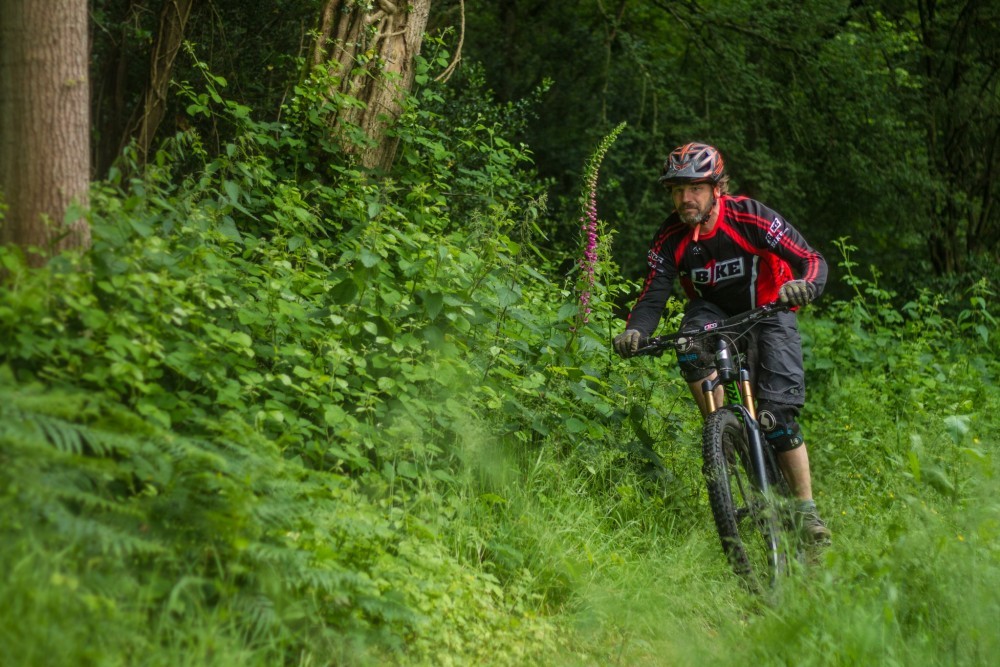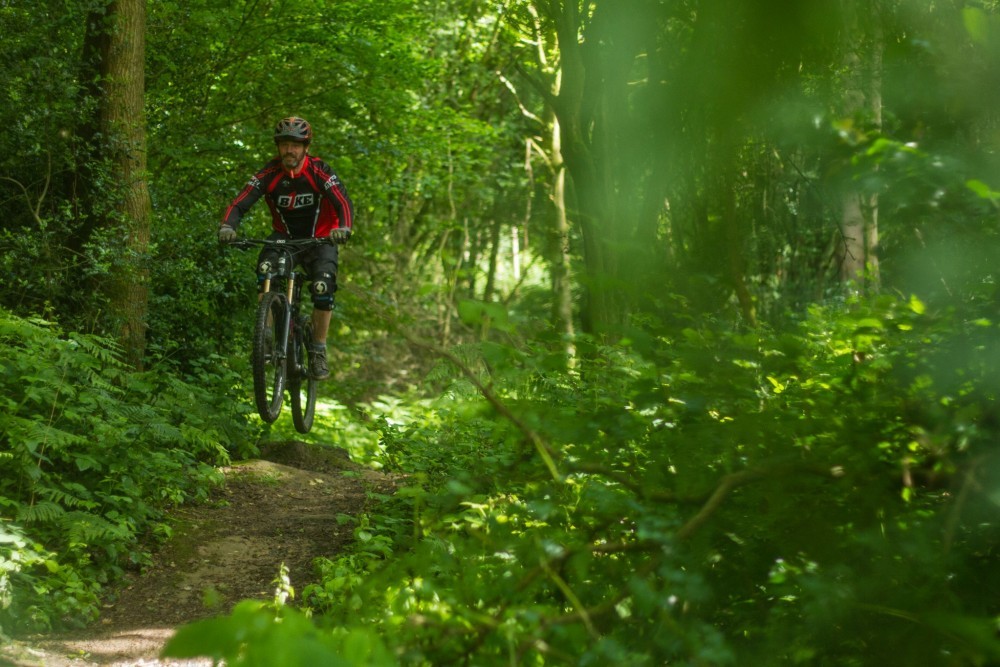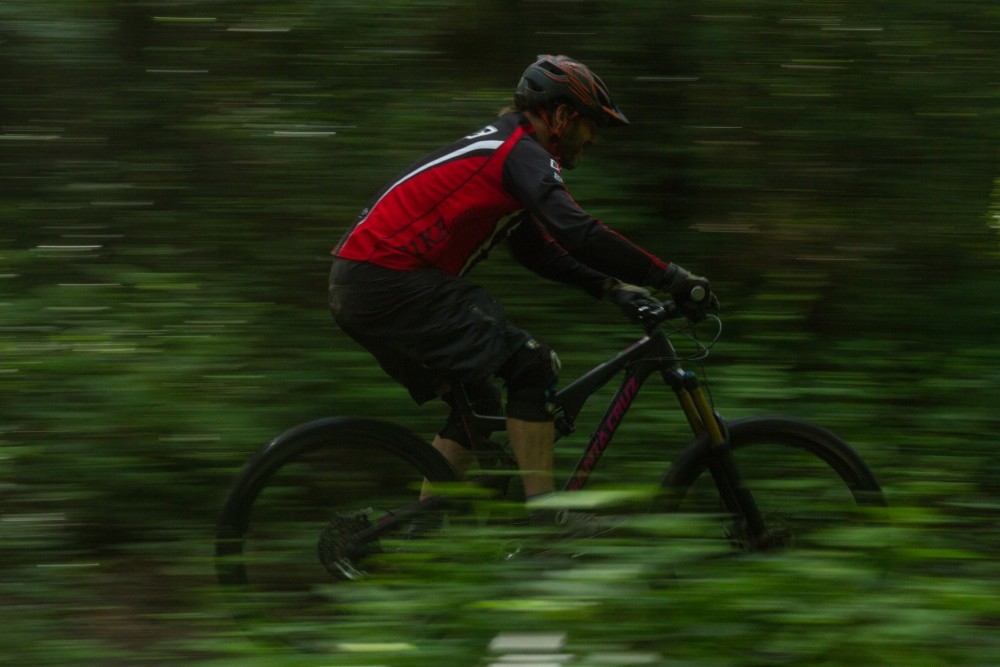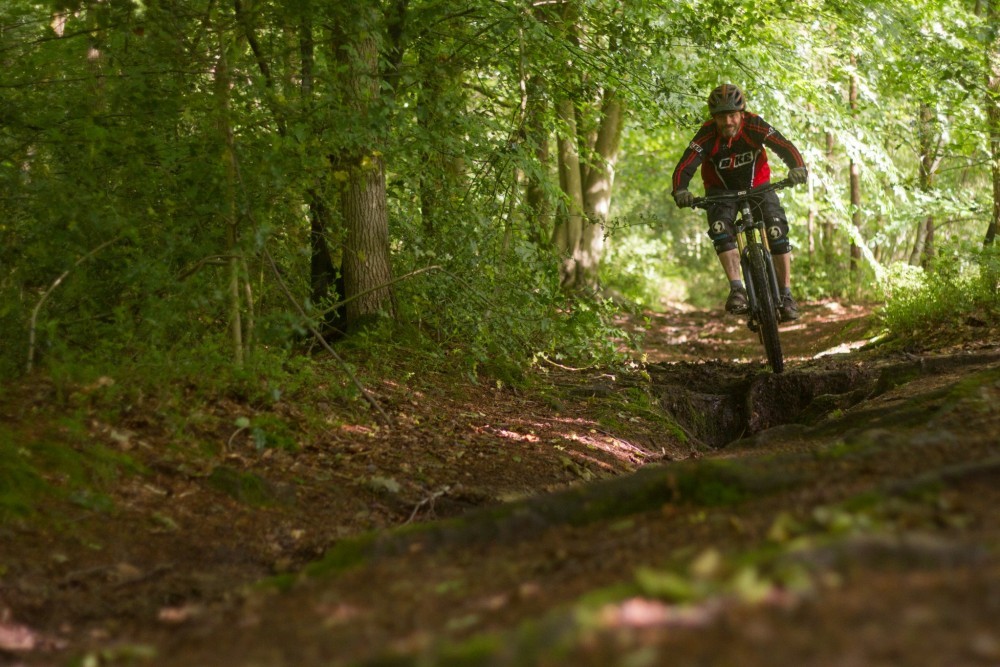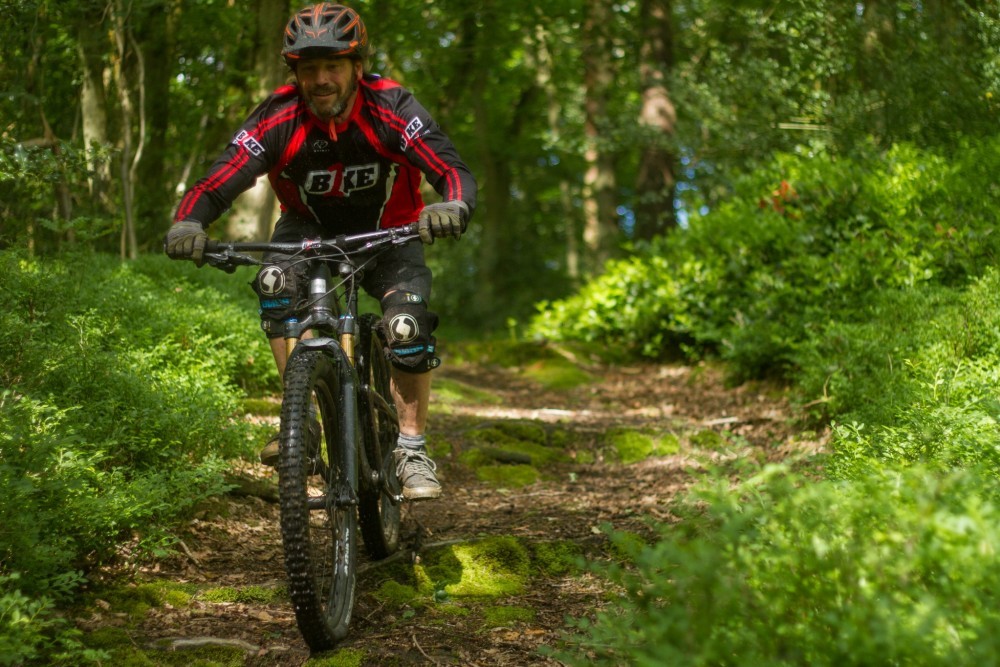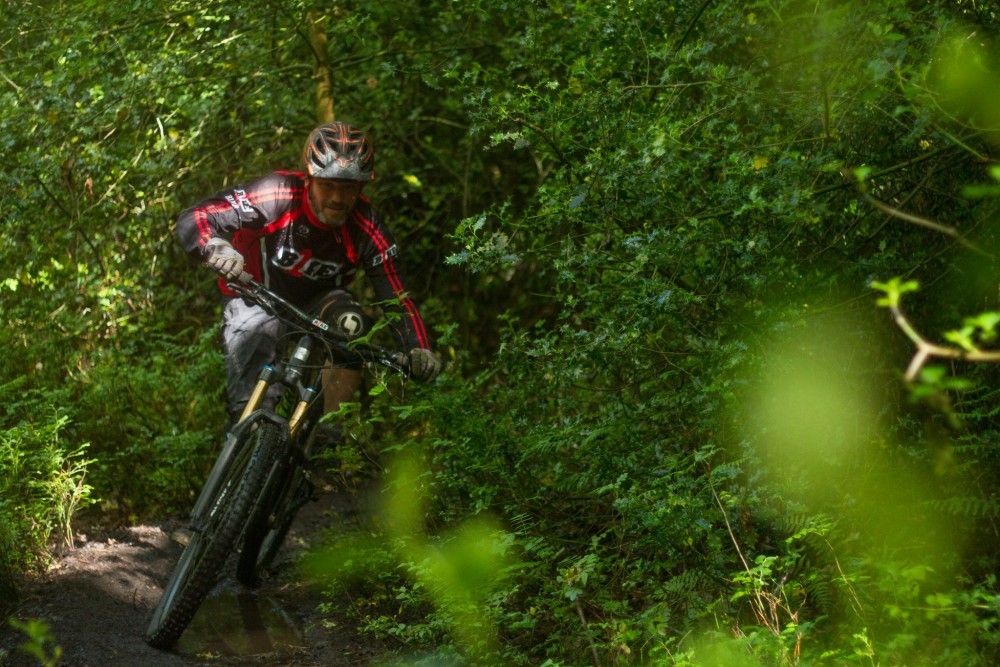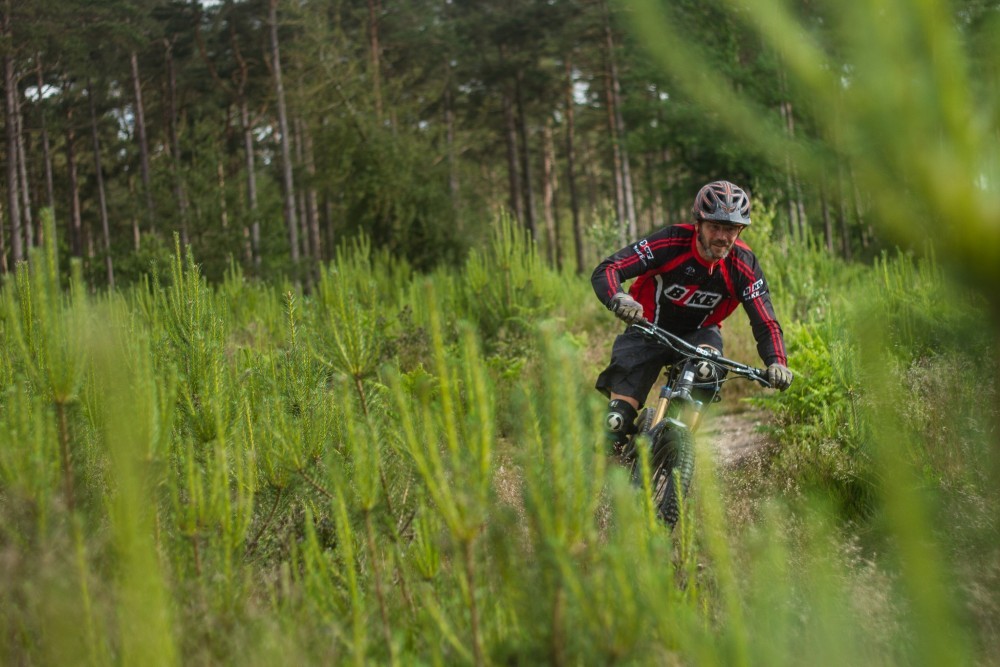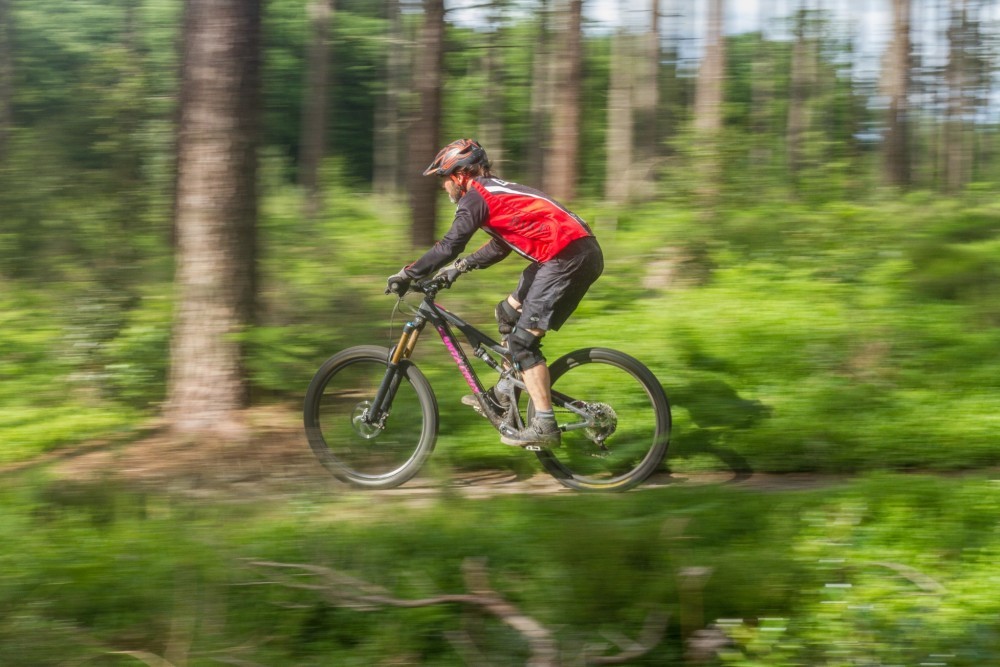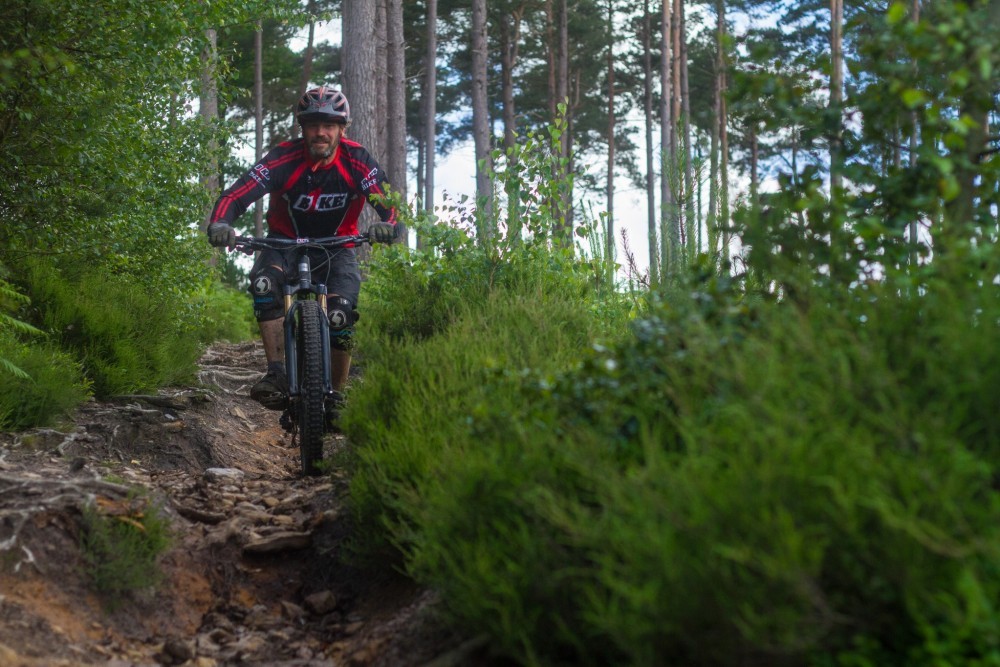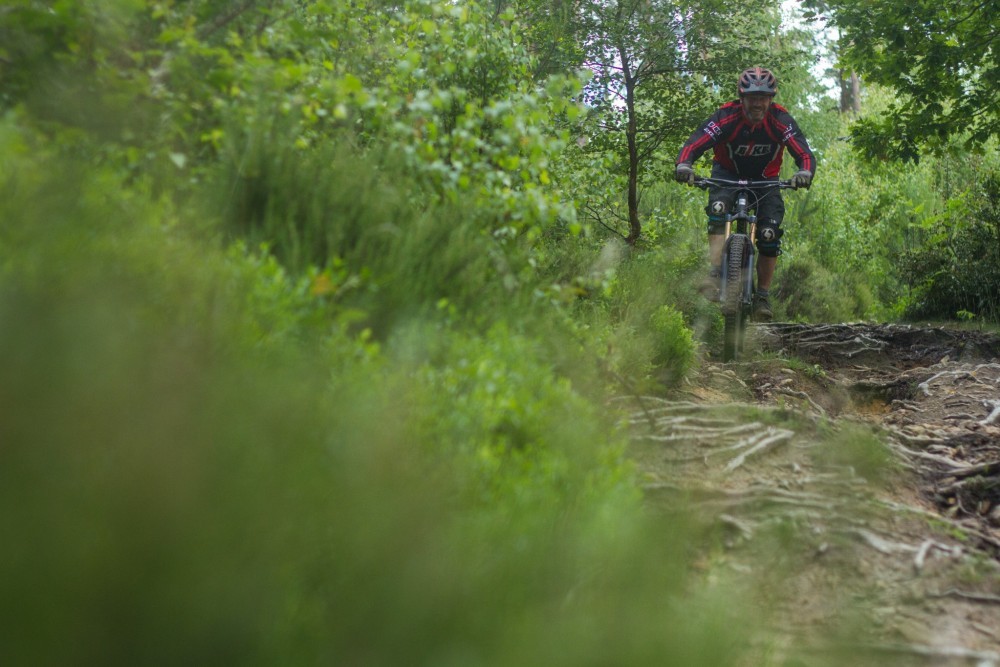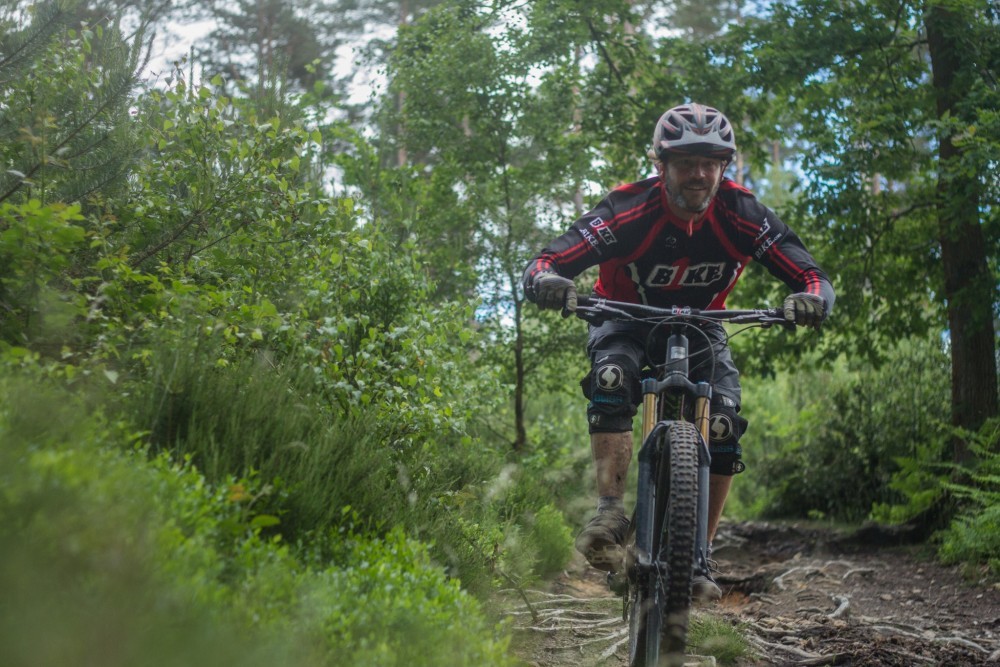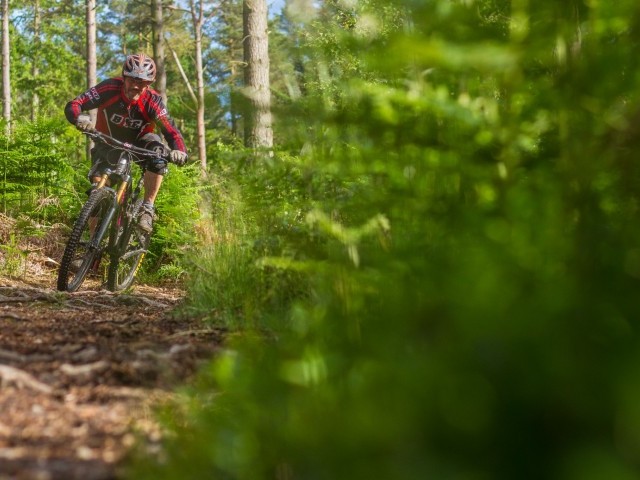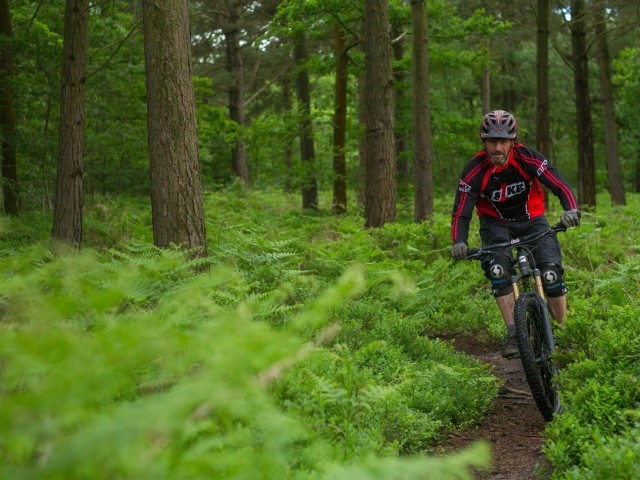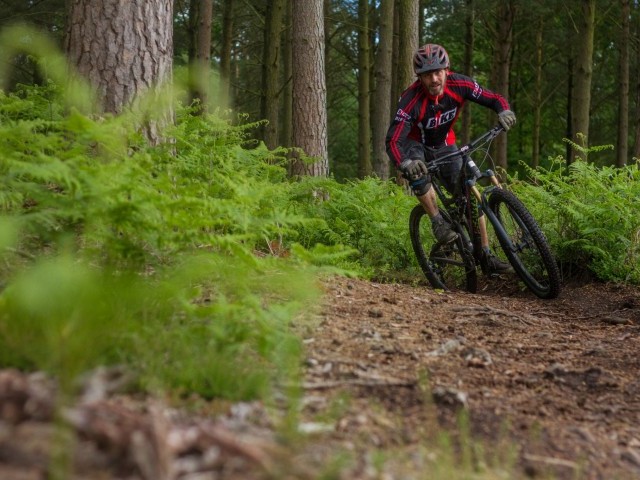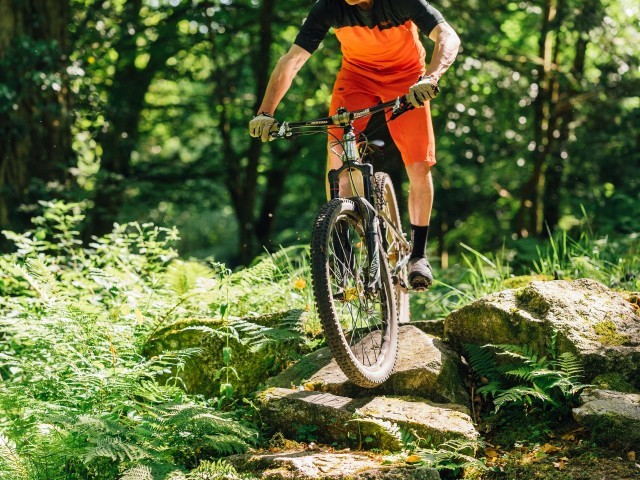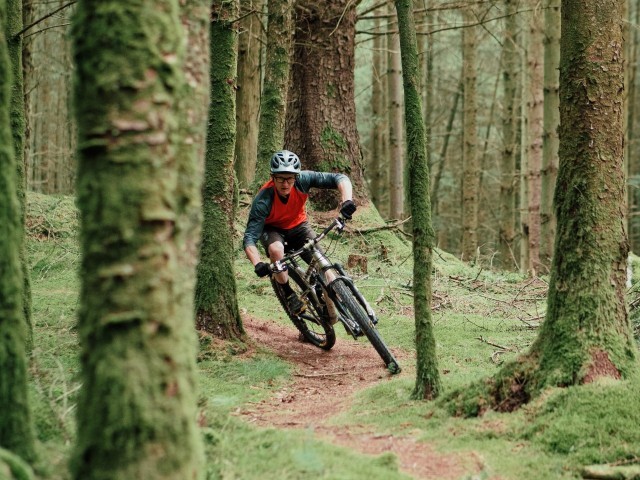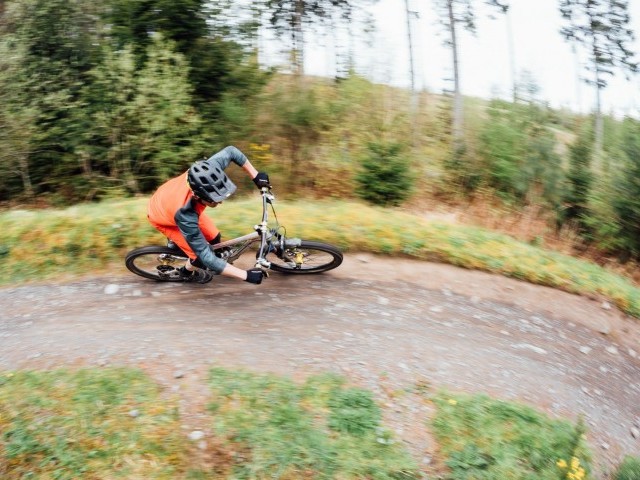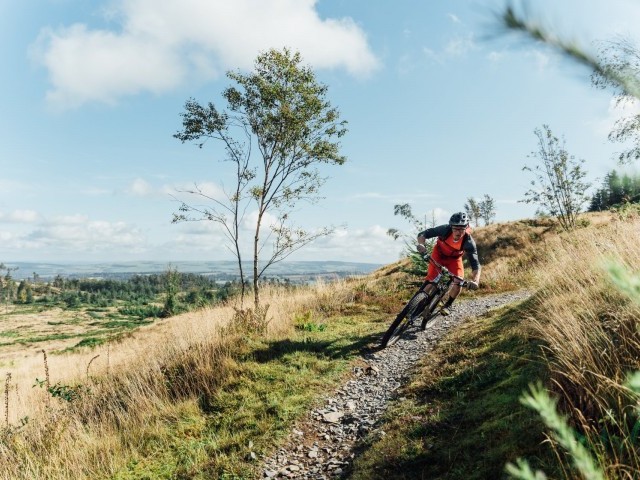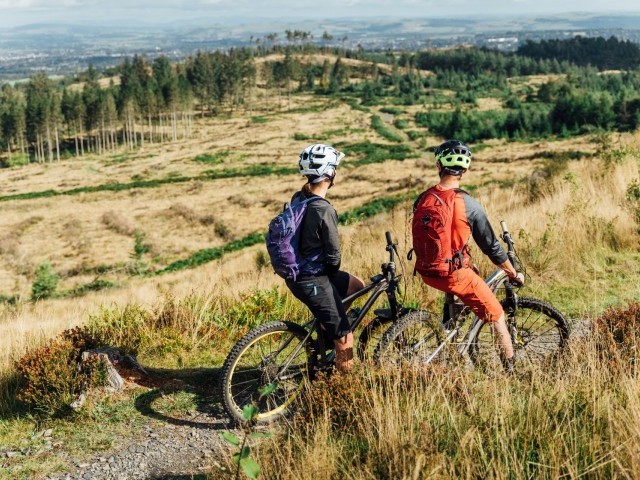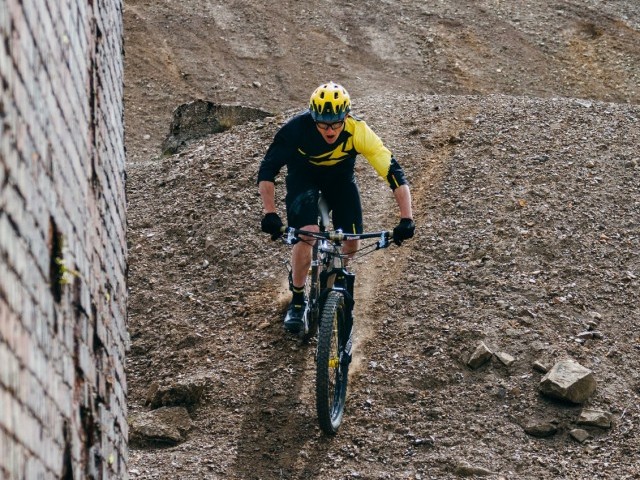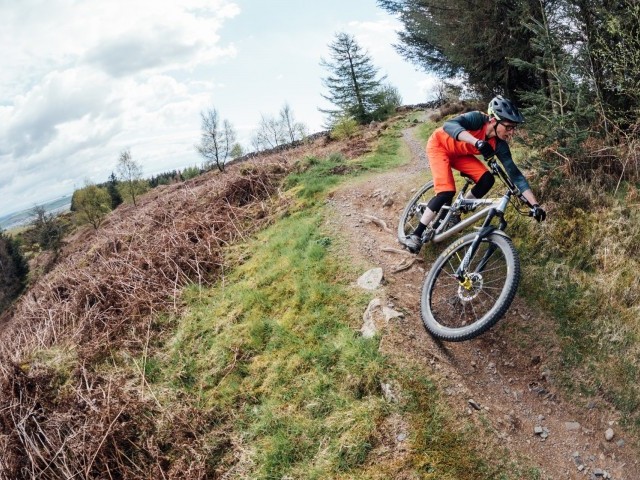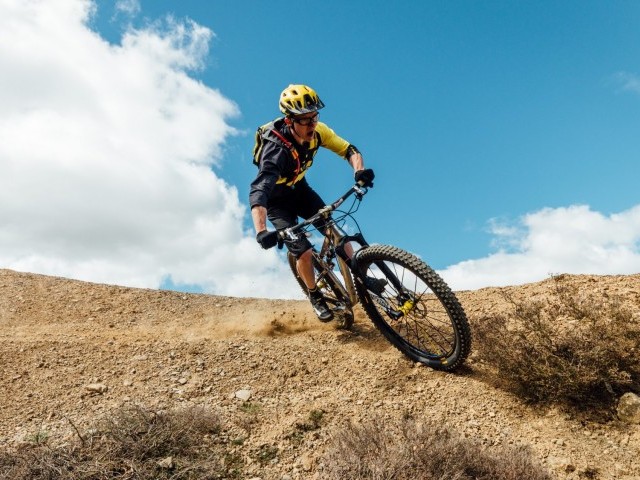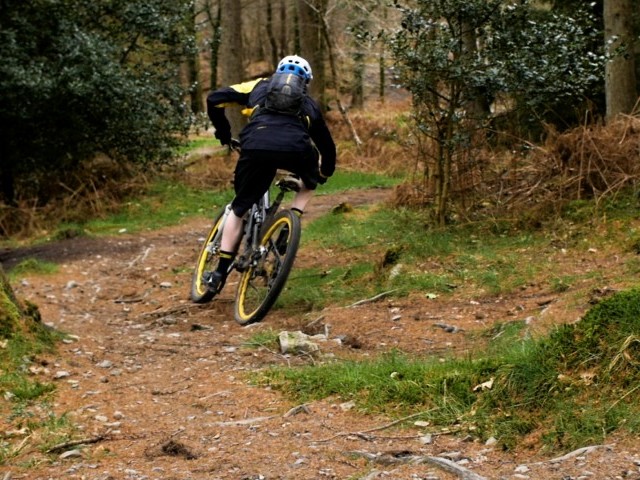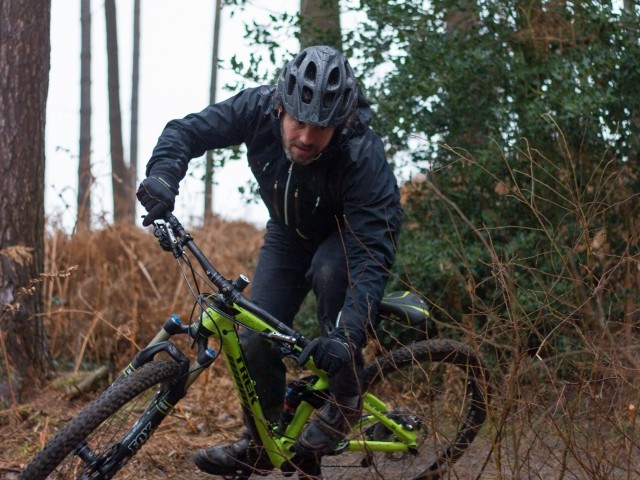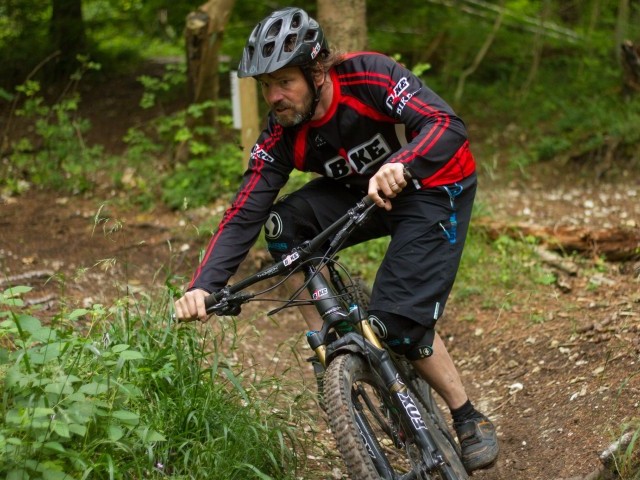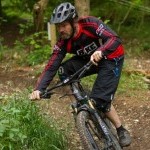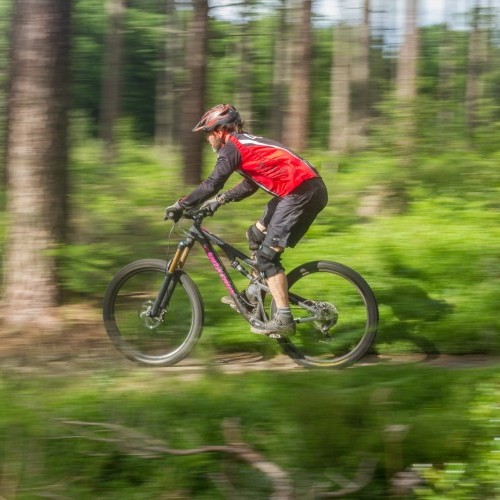
The Art of Fast
Technique / Psychological
Introduction
You're fit (or fit-ish), your bike is the same calibre as your buddy's, but you just can’t seem to carry the same speed that they do. How is it that some riders seem to accelerate away from you with comparative ease, all with seemingly less effort?
This issue we look at some key pointers as to how to carry more speed and investigate 'The Art of Fast'.
First and foremost, let's get one thing out there: 'fast' is subjective and this article isn't about telling you what 'fast' is. What I consider warp speed might be regarded by some as a snails pace. Whatever you perceive to be fast or slow one thing is for sure - everyone can get faster. Secondly, no-one's skill on a bike is judged by others purely on the basis of the maximum speed they momentarily hit. Spikes of high speed punctuated by massive deceleration, rather than a sign of excellence, are more a sign of a fusion of bravado and incompetence.
A far more satisfying goal is to up your average speed, carry more speed for longer and be more consistent. Smashing your pedals to gain speed then whacking on the brakes excessively to deal with what lies ahead is an ugly and brutish approach that will only lead to excessive wear - to you, your bike and the trails. Upping the amount of travel and reducing the weight of your steed may help you achieve small gains but the benefits are limited. Put me in a Ferrari and I may out gun Lewis Hamilton in a mini when going in a straight line, but he'd be lapping me in no time the moment any skill was required.
Clearly, there is more to carrying speed than shelling out more and more on your bike and its components. Of course, there is an element of the quality of your bike vs. how well it will deal with terrain, but there is no direct correlation between the money you spend and the speed you carry.
What then makes the difference? How can you narrow the gap with more certainty than spending more?
There are many considerations beyond those registering on the 'blingometer', and fortunately, they are available to all without lining the pockets of a bike shop owner. You may have to invest some time, but not all your hard earned cash.
You and Your Equipment
Obviously, the way you set up and maintain your bike is important. Setting your bike up for optimum performance will help ensure that you build and carry speed. Drivetrain maintenance is a good place to start. Although getting faster isn't all about producing more power, ensuring that when power is delivered none is wasted is in part down to a correctly functioning drivetrain. Poorly indexed gears, worn cassettes and stretched chains can all lead to skipping gears, and a loss of drive at just the moment you were expecting the opposite can be both frustrating and, as a rider, unsettling. A slipping gear can spit you up and forward and detract significantly from performance.
Suspension set up is another area we often overlook. Understanding how to tune your suspension to the trails you are about to ride will no doubt help you get more from the technology beneath you. If you have never tinkered with your suspension, look into this important part of your bikes set up. Find the midpoint of the range in your rebound and work from there. Small changes will no doubt help you carry speed. Slowing your rebound down too much and the suspension will pack down never getting a chance to recoil, too fast and you as the rider will get pin-balled around on top of your bike more than if it were fully rigid. Check the pressure in your shock is right for your weight, too little and you will wallow, too much, and you won't absorb the bumps in the trail.
Tyre pressure, compound and tread will also be contributory factors that are easily adjusted. As well as providing the traction required to keep you on the trail they also contribute to the smoothness of your ride. Just like your shocks (front and rear), high pressure might reduce rolling resistance on a smooth surface but may increase the resistance when we are into anything less smooth than a tarmac/asphalt road.
In both the case of tyre pressure and suspension setup we are looking for the 'Goldilocks effect'; not too firm, but not too soft. Tune them to the terrain. Experiment a little and you will soon start to recognise what is right (or closer to optimum) for the trails you are riding.
When it comes to you as the rider, of course, your levels of fitness are going to play a part. Who would deny that being a little bit fitter will help you deliver more power for greater lengths of time? The fitter you are, the better the flow of oxygenated blood to the muscles and the better they will perform, but fitness has an added benefit that you may not consider. It is not just your muscles that need a good supply of oxygenated blood but also your brain. The brain is an incredible drain on your available energy. Although accounting for around 2% of your overall weight it can be responsible for up to 20% of your energy consumption. It’s not just a case of supplying oxygenated blood to the brain, but carrying away the exhaust material that burning energy creates. Working on your overall fitness will make not just for more power, but an increased ability to 'think' how best to apply it. Believe it or not creating speed and maintaining it are a thinking persons game. When it comes to carrying speed it is not often that we run out of power, but more a case that we can not control the power or deliver it in the right way at the right time. To ride fast, the brain needs to work fast.
The Mental Game: (Psychological Skills)
How we read the trail, how we mentally deconstruct it and how quickly we make our decisions about the physical response required, and then apply these responses, is a combined approach driven by the brain and body working well together. To ride fast, we need to process information and respond correctly to what we see think and feel. It would be helpful if our brain were less susceptible to being distracted by irrelevant information. To do this, we need to focus less on distractions (which we call 'performance cues') and thus have less information for our brains to decipher. If we give the brain less to do it can do it quicker. If we train our brain to apply a particular physical response to a recognised trail scenario it will eventually become an 'unconscious competency', decreasing further still the amount it has to do. A visual or physical input will be dealt with more automatically and thereby freeing up more of our brains capacity to deal with what is further ahead. The more we can think ahead the more time we have, the less flustered we feel and the less likely we are to freeze and revert to 'flight or fight' based responses. We need to create mental shortcuts in dealing with perceived threats or challenges to deal with them more quickly. Understanding performance cues and dealing with them early has a huge array of benefits and will provide us with the mental shortcuts we need.
If we stop thinking of the trail features in terms of specifics and package things more generally, we can have a simpler approach to dealing with them. Rather than think in terms of wet roots, rocks, drops, bumps and the like, think of them as 'performance cues'.
Visual Performance Cues: the ones we see - look through these.
Input: ones we feel - pump through these.
Anticipation/Waiting: the ones we fear - think through these.
Unfortunately, if we don't have a plan in place when we come across a particular feature, it is easy for us to start responding with a less appropriate 'flight or fight' based response. These responses are controlled by the 'Sympathetic Nervous System'. Our more controlled responses are dealt with by the 'Parasympathetic Nervous System.'
The Sympathetic Nervous System controls the body's response to perceived threat through activating our 'flight or fight' responses. In this state, functions not critical to survival start shutting down.
If you find yourself taking a deep breath and holding it, tensing your core muscles, dropping your head and clenching your buttocks, these are a result of the Sympathetic Nervous System taking control. As such we start to feel more anxious and essentially freeze in the face of adversity. We are doing nothing in this state, or certainly nothing to make the bike respond well. The knock-on effect is that inputs are not dealt with, our body stops contributing to the suspension process. We stop applying learned responses that would help control the bike and instead revert to a protective state, preparing for impact not for success. In contrast, the parasympathetic nervous system controls the 'rest and digest' functions of the body - staying cool, calm and collected when riding we need to activate the parasympathetic.
Putting any understanding of neurological science aside, what does this mean to us as a rider when it comes to going fast, maintaining speed and dealing with what is fast approaching?
The more we hold our breath, tense our core and the tighter we grip the bars, then the less freely and smoothly the bike and any available suspension will work. We get bounced around more as we become increasingly tense. Our sense of time perception changes; because inputs are exaggerated, and we start to feel everything the bike does we become ever more aware of our speed and increasingly it threatens us. It’s a downward spiral. Many of us remember a sudden bout of 'speed wobble' as a child (or even still later in life) - this is a direct result of tensing, breath holding and locking on ever tighter to the bars. As a rider, you need to recognise when these negative responses are starting to take over and act fast. In short, don't just freeze, do something.
To start reversing the process and start to calm things down (activate the Parasympathetic Nervous System) there are a few simple tricks:
1. Breath out - regulating our breathing will help in many ways.
2. Loosen your grip - instead of gripping on tight, drop your wrists and heels. You will generate a far better contact with the bike and at the same time dampen the inputs you feel.
3. Soften up - allow your arms and legs to bend and contribute to the process of dealing with the bumps in the trail.
You should quickly start to feel more in control and, as such, be less aware of your speed. The more you do this, the more comfortable you will feel, and the better you feel, the happier you will be to let the bike accelerate.
Bearing in mind that the brain controls the body and emotions can control the brain, keeping emotional control is key. That said, there are certain physical skills that when applied will help us maintain better physical control of the bike and thus our emotional control. It’s a bit of a circle but needn't be a vicious one and fortunately as quickly as the downward spiral can occur we can reverse it. What physical skills do we need to develop in order to carry speed?
The Physical Skills
We identify eight physical elements that all play a part in riding, and it’s no great surprise that they all play a role in carrying speed when we want to.
As we go faster, we are subject to greater force. Bigger inputs in higher frequency require us to simply do more of the good stuff that actually we should be doing all the time. Don't only think about these elements when you get to the edge of control - practice on applying them all the time. Treat them like you do a seatbelt in a car - don't wait until you’re about to crash to use them.
Looking - we refer to it time and time again. Sorry to be repetitive, but the importance of looking up and through sections doesn't change from ride to ride. (See the article 'Re:vision' in an earlier issue). Don't beat yourself up if you momentarily look down, but try and reduce the 'dwell time'. If you approach looking through sections to the exit point - even if you do look down, you still have a point of reference to look back up to and through, once you have raised your eye-line.
Footwork - our primary point of contact with the bike and through which we drive a lot of the energy. Remember, we want that energy to be delivered down and through the bike, not push us as the rider up and forward. It is easy when trying to create speed to push a higher gear, yet pedalling hard in a high gear it is easy for the toes to drop. This can lead to the rider getting too forward of the centre line from where the inputs from the trail can push us up and forward, accelerating you as the rider but not the bike. Remember as heels (and wrists) drop the bike accelerates, as your toes drop you accelerate but the bike doesn't (at least not as quickly).
Body Position - with your heels set and sat in the pocket (just behind the centre line of your bike) it is easy to keep your lower body where you want it. Don't forget the upper body, though. Every time it lurches down towards the bars or gets ‘pushed' we have some recovering to do. This recovery takes some time and effort and creates a 'time spike'. A little push here or there may not feel too debilitating, but they all add up and cost you time. Mentally you have dropped down what we call the 'concentration ladder' and physically you have just added to the number of things you have to do to the list. The combination of the physical and mental 'stall' is a loss of speed. Even if the bike has not slowed as a result, you may feel the need to grab a little bit of brake just to buy you some time to deal with what is now occurring and regain mental control. Controlling both upper and lower body position, and not allowing yourself to get pushed, is key to carrying speed.
Energy Management - the best way to deal with the terrain and avoid getting pushed is by developing your energy management skills - pumping to create speed or lift (or both) and opening up the levers of the heels and wrists so that you can better deal with inputs from the trail is key. Watch a top rider over the most aggressive terrain and if things are going well, their upper body and head are steady even if their legs and arms are working hard. Absorbing some inputs by softening up, and driving into and through the bike to stop it slowing for others.
Entry/Section/Exit - by looking up and through sections we can get into the habit of quickly assessing what is required of us as a rider in that section. Setting ourselves up early (prior to the entry point) and applying the physical skills needed to get us through the section more unconsciously allows us to focus on what is next (beyond the exit). The more quickly we see things and the more prepared we are, then the more we are ready for what follows. Staying mentally ahead of the bike and thinking through sections will keep us relaxed and thus less aware of the speed we are going. Dealing with performance cues early will reduce the desire to slow the bike down.
Speed Control - remember there are three aspects to this: slow down, ease off, speed up. To carry speed right through a section, it is important to set our entry speed. Go in too hot and brake mid-section and your exit speed will be down. Set your speed prior to entry and accelerate through and you will be less likely to over slow before the entry or feel the need to decelerate in the section. Slower in may well mean faster out. It is also well worth thinking about how we assess our ability to be able to ride a section. It is easy to prioritise 'speed' as the governing factor to successfully negotiating a section. For example, approaching a corner it is easy to become all consumed with the dilemma of “how fast can I take this corner?”, rather than thinking “what do I need to do to take this corner fast?”. If you set up a checklist in your mind in advance (before the entry point) as to what you need to do and when you need to do it, then you are far less concerned about one single element and have a better framework for success. All the time you are worrying about whether you can make a section at the speed you have taken it, you are not thinking about positive actions that can be employed to ride that section.
Trying to GO fast rarely leads to actually BEING fast. Tension builds, our position on the bike suffers, we drift away from ‘optimal’ performance in the search for 'maximal'. To create speed, you need a mix of all the physical and mental skills. The more you focus on performing a technique well, the more you keep your emotions in check. The better you deal with inputs, the faster you become. Once you start getting bucked around you will feel things are happening fast even if you are not going fast. The more you try and apply great technique the less you are aware of speed and the less negatively you react to it rising. You have probably heard people say they grabbed the brakes in panic - they are usually not wrong. Avoid the panic and you'll apply the brakes less often and less sharply. Commit to developing your skills and you will be more relaxed, safe in the knowledge you are doing all you can to succeed. Think through sections early and set up well and you'll free up the brain rather than running out of time and succumbing to more negative emotional responses. The earlier you are set up for a section physically and emotionally, the sooner you can think through the next and thus the more speed you will carry.
The keys to unlocking greater speed are not hard to find. There is no real trickery. Manage performance cues, stay in emotional control and apply best practice. Try to ride smoothly and you will be fast, try to ride fast and it is easy to end up ragged. Avoid making speed your primary goal, think in terms of optimal riding not maximal. It's the rider that is always thinking about what they can do better on the next occasion rather than simply checking their most recent time stats that is likely to make the greater gains - you cant change the past, but you can influence the future. You may well not notice the incremental (or seismic) gains you make from one ride to the next, but those in your wake certainly will. Stick with it and pretty soon fast will feel slow - when that starts to happen, you know you are on the right path.
This technique article was in Issue 42 of IMB.
Related
By Richard Kelly
Richard Kelly has been riding bikes since forever, and teaching people to become better mountain bikers for over a decade. He’s always out in the Surrey Hills training riders, building trails and riding for himself whenever he gets the chance. His unique perspective on mountain bike technique has earned him fans the world over, with some speculating he is actually Jamiroquai or perhaps Jack Sparrow…







